Tectonic Modelling Laboratory
- Home
- Instruments and Personnel
- Methods and Applications
- Project and Scientific Interests
- Pubblications

Analogue modelling is an experimental technique by which geological processes can be reproduced and analysed through the construction and deformation of small-scale models. These models, with dimensions ranging from a few centimetres to a few meters, are built with suitable materials (the most common of which are different kinds of sand and silicones) able to reproduce the deformative (rheological) characteristics of natural rocks and deformed in time intervals ranging from a few minutes to hours.
Although these models simplify the geometry and rheology of the geological process under investigation, they represent a realistic dynamic and geometric replica of the prototype. This technique is thus able to reproduce and analyse processes that develop over time scales of millions of years and over geometrical scales of tens or hundreds kilometres, allowing the possibility to continuously monitor geological processes (such as mountain building, continental and oceanic rifting) of which only the final stage can be observed in nature and thus remain outside the domain of direct observation. This aspect, together with the possibility of evaluating the influence of the different parameters that play in a certain geological process, is the most important strong point of this methodology.
The laboratory is equipped with a number of apparatuses (in both normal and enhanced gravity) that may simulate the different tangential and vertical forces acting in nature. Specifically, the apparatuses can induce deformation in both pure and simple shear conditions, allowing to investigate a large variety of crustal and lithospheric-scale experiments in extensional, compressional, or strike slip settings.
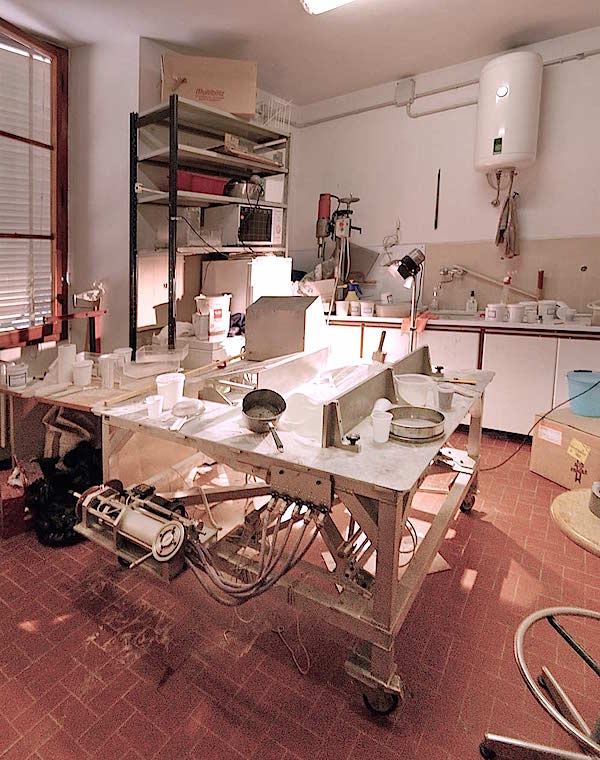
INSTRUMENTS
The laboratory is equipped with a number of apparatuses:
- High-capacity centrifuge PM980R (ALC International) that allows the deformation of physical models in an enhanced gravitational field.
- Pure-simple shear apparatus, with the possibility of injection of silicone into the model to reproduce magma emplacement during deformation.
- Pure shear apparatus that allows the unidirectional deformation of the model.
- Coni-cylindrical viscometer for measuring the viscosity of experimental ductile materials.
- Laser scanner Optix 400M (3D Digital Corporation) for monitoring (in all deformation apparatuses) the evolution of model topography through time.
- Apparatus for interferometric analysis of model surface

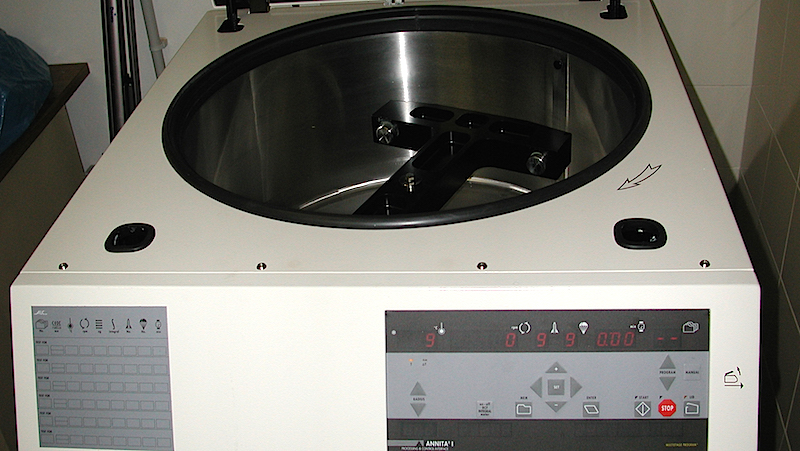
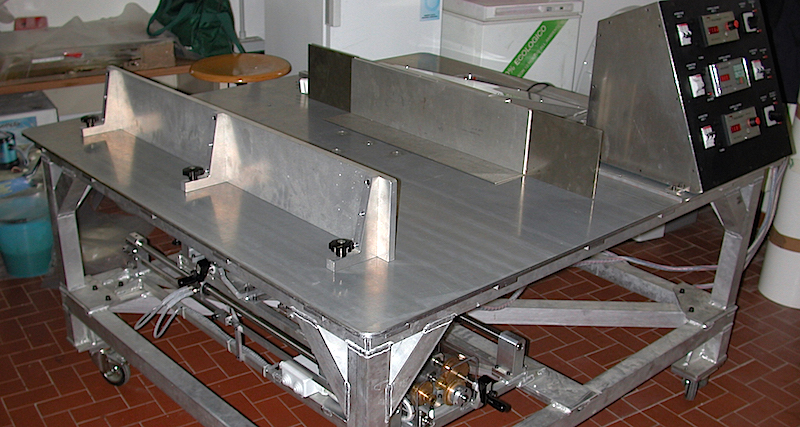
STAFF
Ph.D Marco Bonini (IGG-CNR Researcher - Head Laboratory)
Ph.D Giacomo Corti (IGG-CNR Researcher)
Ph.D Domenico Montanari (IGG-CNR Researcher)
CONTACTS
Phones:
+39 055 2757541 (Marco Bonini)
+39 055 2757524 (Giacomo Corti)
+39 055 2757540 (Domenico Montanari)
E-mail:
marco.bonini@igg.cnr.it
giacomo.corti@igg.cnr.it
domenico.montanari@igg.cnr.it
METHODS AND APPLICATIONS
Models deformed in an enhanced gravity field
The models are deformed in a high-capacity centrifuge (PM980R - ALC International), an apparatus that produces centrifuge forces that play the same role on the models are as gravity in the natural process under investigation. It is particularly suitable to model the continental extension processes, although it has been recently applied to model strike-slip deformation and other deformative processes.
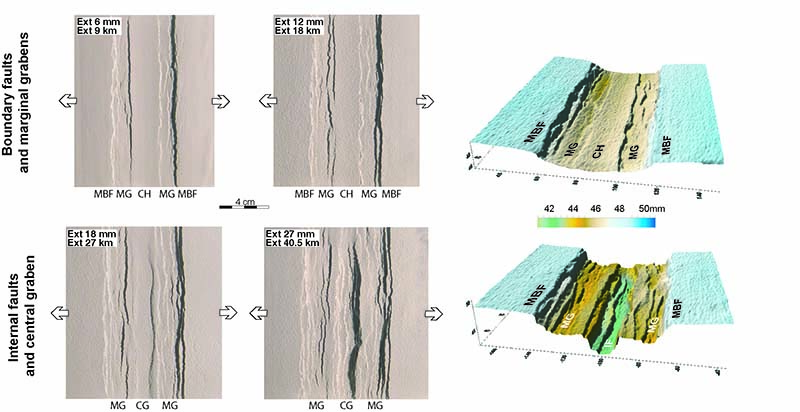
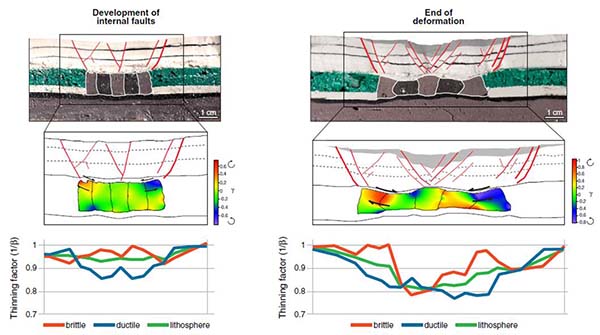
Normal-gravity models
The models are deformed under the normal (terrestrial) gravity field, through displacement of a mobile wall that imposes deformation to the models. In the pure-simple shear prototype apparatus, the kinematics imposed to the mobile wall can be varied, thereby simulating the deformation in different tectonic settings. A special apparatus consists of an electrically-controlled piston that injects the silicone into the model to reproduce the emplacement of analogue magma during deformation.
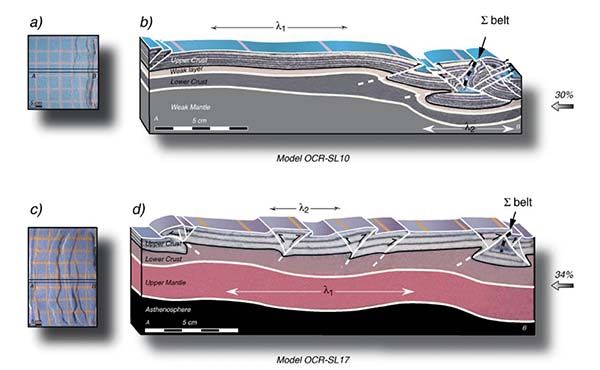
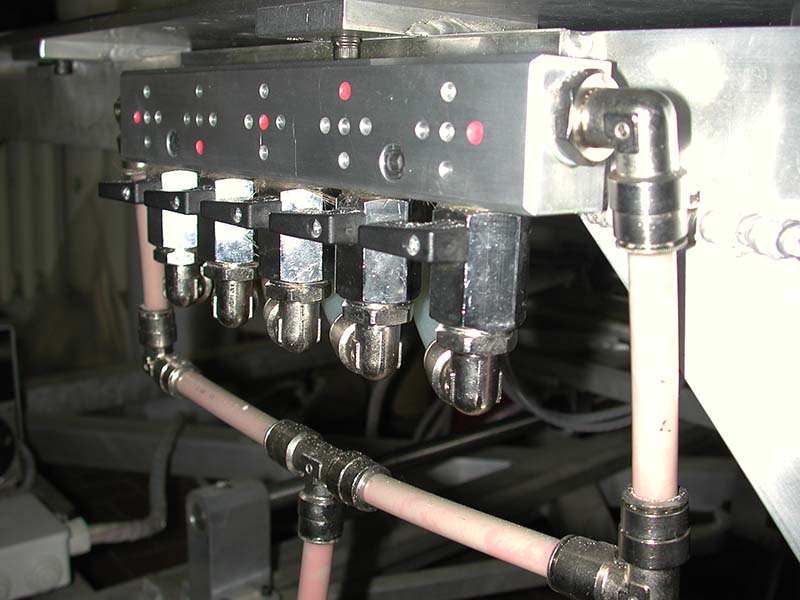
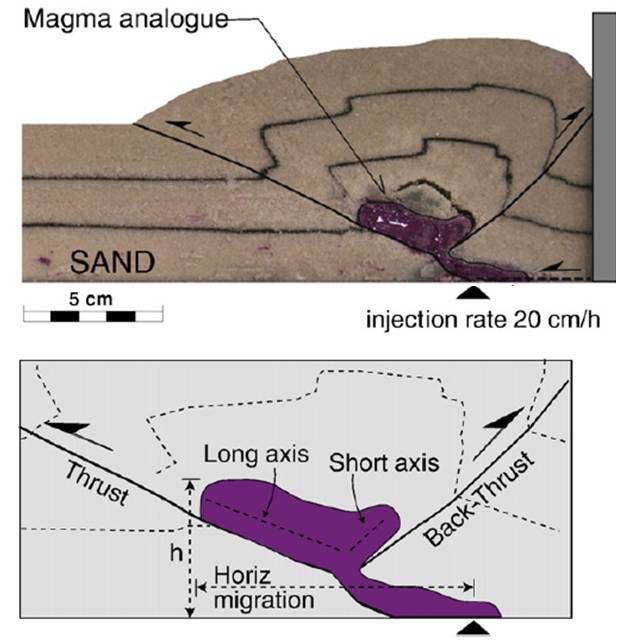
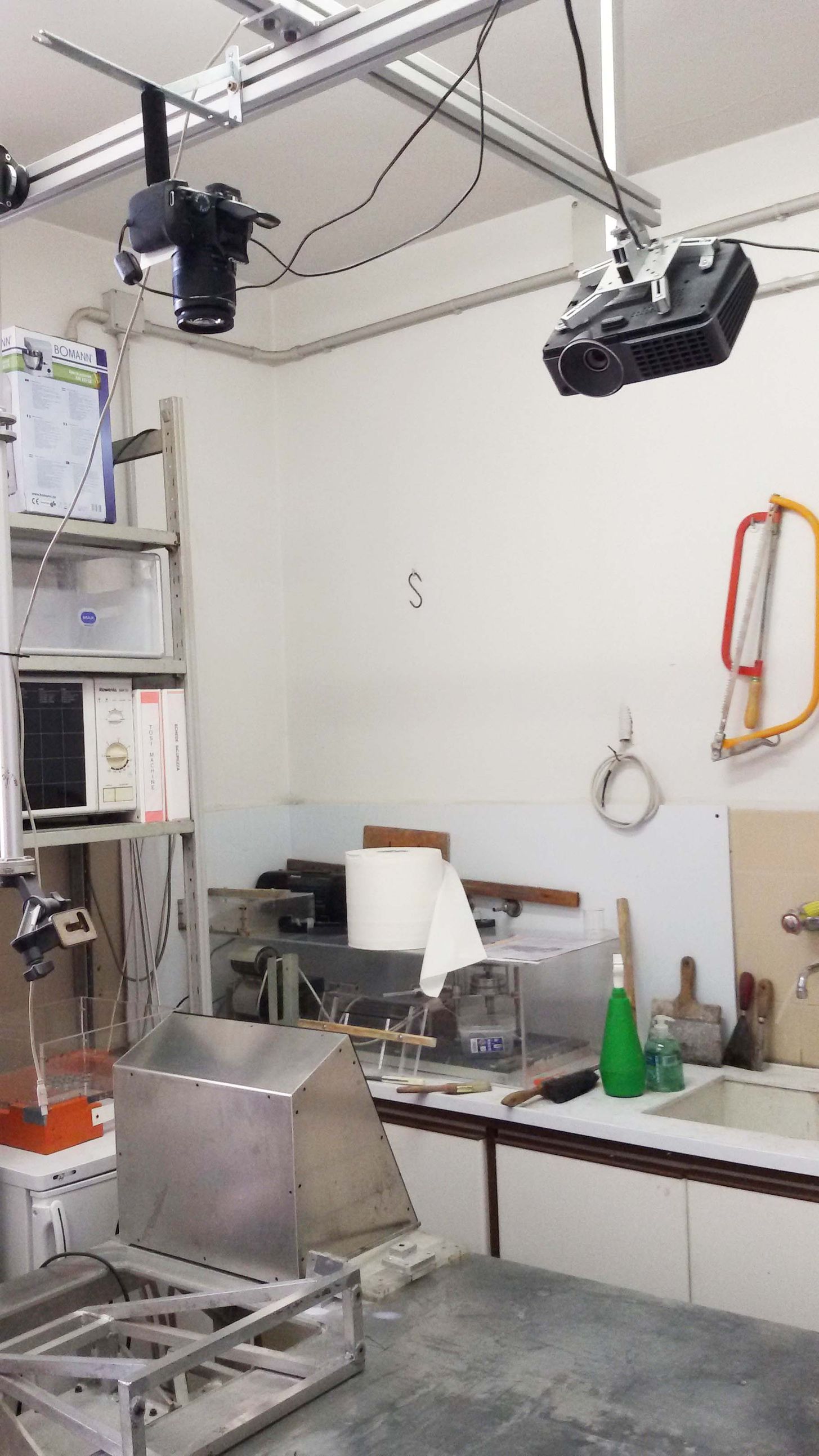
PROJECTS
The laboratory has been involved in a number of scientific projects funded by the following institutions:
- Progetto Nazionale di Ricerca in Antartide (PdR 2013/AZ2.04; PdR 2010/A2.05; PdR 2004/4.01)
- Ministero dell'Istruzione, dell'Università e della Ricerca (COFIN 1999; COFIN 2000; PRIN 2003; PRIN 2005; PRIN 2009)
- CNR (PdR RSTL 105)
- Bilateral projects (MAE-CONACyT2003-2005, 2011-2013; CNR-ANAS 2012-2013, 2014-2015)
- European Projects
- IMAGE, Integrated Methods for Advanced Geothermal Exploration (7th Framework Programme for Research and Technological Development)
- TOPOMOD, Sculpting the Earth’s landscape: insights from modelling deep–surface processes (7th Framework Programme for Research and Technological Development, Marie Curie Initial Training Networks)
MAIN SCIENTIFIC INTERESTS
The activity of the ‘Tectonic Modelling Laboratory’ aims to investigate geological and tectonic processes occurring in nature at different scales, from mesoscopic to lithospheric. In particular, the main research lines address some of the tectonic processes that are fundamental for the evolution of Earth, particularly:
- continental extension
- continental collision and development of orogenic belts
- inversion tectonics
- emplacement of magma in different geodynamic settings, and analysis of sedimentary basins.
- Other studies address geomorphological processes (e.g., modeling of ice flow and landslide phenomena) as well as the conservation of cultural heritage (e.g., stability analysis of the Michelangelo’s David).
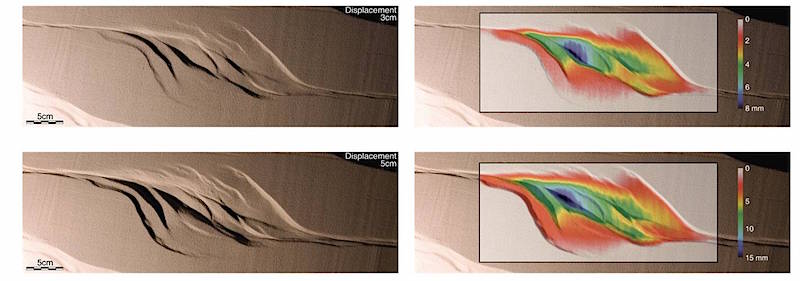
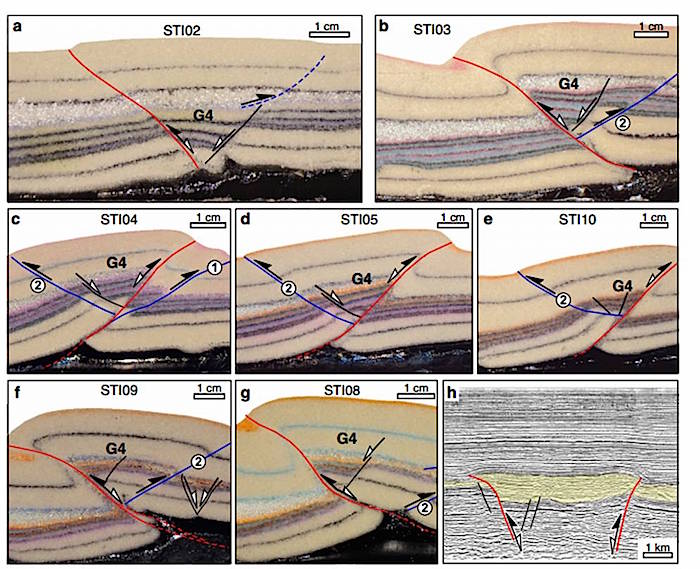
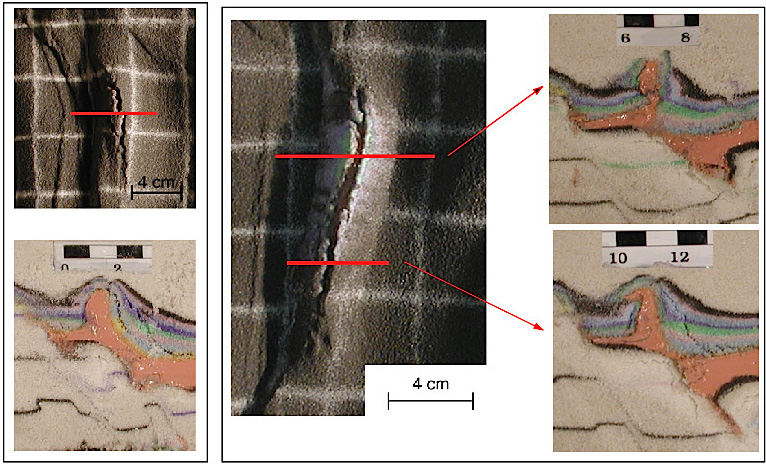
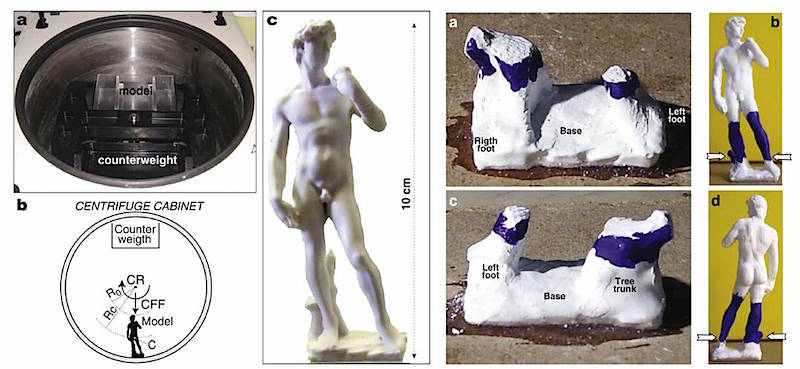
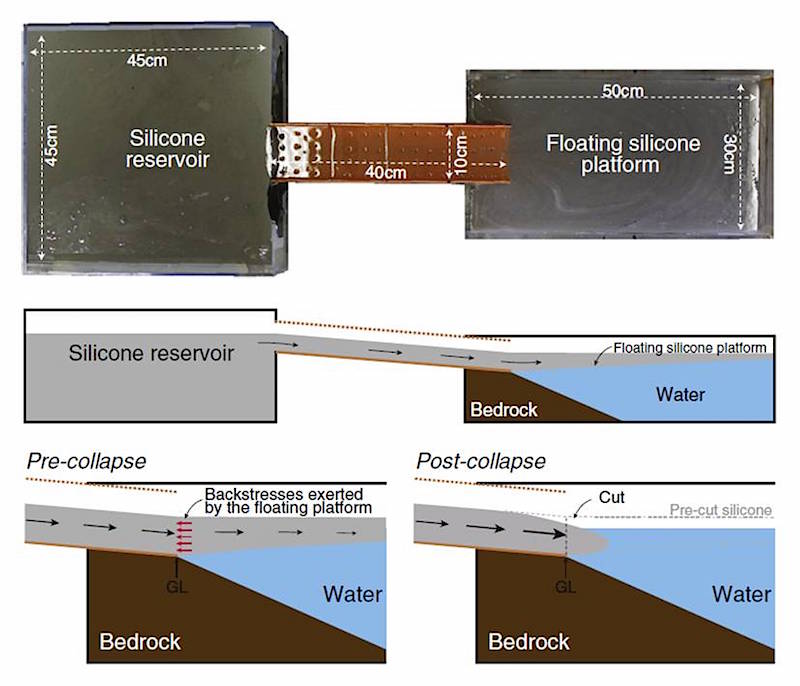
SELECTED PUBLICATIONS
- Corti G., Dooley T.P. (2015). Lithospheric-scale centrifuge models of pull-apart basins. Tectonophysics, 664, 154–163.
- Corti, G., Costagliola P., Bonini M., Benvenuti M., Pecchioni E., Vaiani A., Landucci F. (2015). Modelling the failure mechanisms of Michelangelo’s David through small-scale centrifuge experiments. Journal of Cultural Heritage 16, 26–31.
- Del Ventisette C., Gigli G., Bonini M., Corti G., Montanari D., Santoro S., Sani F., Fanti R., Casagli N. (2015). Insights from analogue modelling into the deformation mechanism of the Vaiont landslide. Geomorphology 228, 52–59.
- Philippon M., Willingshofer E., Sokoutis D., Corti G., Sani F., Bonini M., Cloetingh S. (2015). Slip re-orientation in oblique rifts. Geology 43, 147–150; Data Repository item 2015056 | doi:10.1130/G36208.1.
- Corti G. Zeoli A., Iandelli I. (2014). Small-scale modelling of ice flow perturbations induced by sudden ice shelf breakup. Global and Planetary Change, 119, 51-55.
- Bonini M., Sani F., Antonielli B. (2012). Basin inversion and contractional reactivation of inherited normal faults: A review based on previous and new experimental models. Tectonophysics 522–523, 55–88; doi:10.1016/j.tecto.2011.11.014.
- Corti G. (2012). Evolution and characteristics of continental rifting: analogue modeling-inspired view and comparison with examples from the East African Rift System. Tectonophysics, 522-523, 1-33, http://dx.doi.org/10.1016/j.tecto.2011.06.010
- Agostini A., Bonini M., Corti G., Sani F., Mazzarini F. (2011). Fault architecture in the Main Ethiopian Rift and comparison with experimental models: Implications for rift evolution and Nubia–Somalia kinematics. Earth and Planetary Science Letters 301, 479–492.
- Corti G., Calignano E., Petit C., Sani F. (2011). Controls of lithospheric structure and plate kinematics on rift architecture and evolution: an experimental modeling of the Baikal Rift. Tectonics, 30, TC3011, doi:10.1029/2011TC002871.
- Montanari D., Corti G., Sani F., Del Ventisette C., Bonini M., Moratti G. (2010). Experimental investigation on granite emplacement during shortening. Tectonophysics 484, 147–155; doi:10.1016/j.tecto.2009.09.010.
- Agostini A., Corti G., Zeoli A., Mulugeta G. (2009). Evolution, pattern and partitioning of deformation during oblique continental rifting: Inferences from lithospheric-scale centrifuge models. Geochemistry, Geosphysics, Geosystems (GCubed), 10, Q11015, doi:10.1029/2009GC002676.
- Corti G. (2008). Control of rift obliquity on the evolution and segmentation of the main Ethiopian rift. Nature Geoscience, 1, 258-262.
- Bonini M. (2007). Deformation patterns and structural vergence in brittle–ductile thrust wedges: An additional analogue modelling perspective. Journal of Structural Geology 29, 141-158. doi:10.1016/j.jsg.2006.06.
- Bonini M., Corti G., Del Ventisette C., Manetti P., Mulugeta G., Sokoutis D. (2007). Modelling the lithospheric rheology control on the Cretaceous rifting in West Antarctica. Terra Nova 19, 360-366; doi:10.1111/j.1365-3121.2007.00760.x.
- Corti G., Bonini M., Conticelli S., Innocenti F., Manetti P., Sokoutis D. (2003). Analogue modelling of continental extension: a review focused on the relations between the patterns of deformation and the presence of magma. Earth-Science Reviews, 63, 169-247.
- Bonini M. (2003). Detachment folding, fold amplification, and diapirism in thrust wedge experiments. Tectonics 22 (6), 1065; doi:10.1029/2002TC001458.
- Corti G., Zeoli A., Bonini M. (2003). Ice-flow dynamics and meteorite collection in Antarctica. Earth and Planetary Science Letters 215, 371-378. (The paper has been summarised in: Putting Meteorites on Ice. Editors’ Choice - Highlights from the recent literature, Science, 302, p. 747).
- Corti G., VanWijk J., Bonini M., Sokoutis D., Cloetingh S., Innocenti F., Manetti P. (2003). Transition from continental break-up to punctiform seafloor spreading: How fast, symmetric and magmatic. Geophysical Research Letters 30 (12), 1604; doi:10.1029/2003GL01737.
- Burg J.-P., Sokoutis D., Bonini M. (2002). Model-inspired interpretation of seismic structures in the Central Alps: Crustal wedging and buckling at mature stage of collision. Geology 30, 643-646.
- Bonini M. (2001). Passive roof thrusting and forelandward fold propagation in scaled brittle-ductile physical models of thrust wedges. Journal of Geophysical Research, 106, (B2), 2291-2311. Correction to Plate 2 caption. Journal of Geophysical Research 106, (B5), 8955.